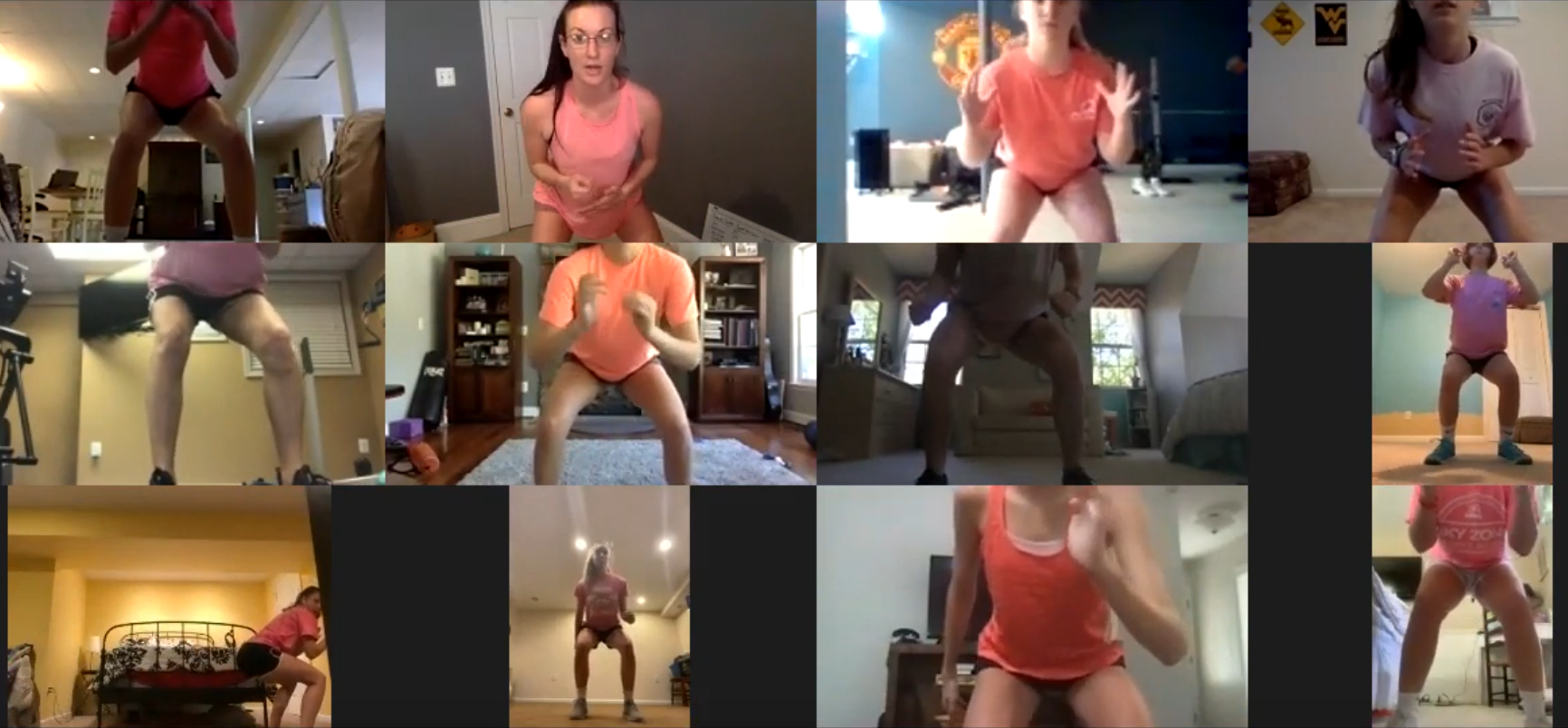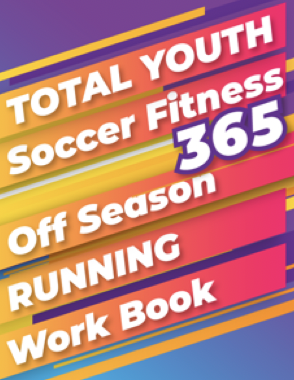
12 Oct Reflections on Virtual Soccer Speed, Strength and Conditioning During COVID-19
This year felt like ten days.
Of course, not everyone can say it zipped by for them.
Some were doing math homework within earshot of their siblings.
Some were on conference calls while the cleaning lady was vacuuming.
And some were signing into class while their parents were bickering.
To say it’s been a year for adaptation, is an understatement. Millions of people had to change their environment, their jobs, their mediums, in fact, embrace the drastic changes in order to get by during the lock down.
And as private sector speed, strength and conditioning coach, this was the ultimate challenge – one far greater than I ever experienced.
Not max deadlifts.
Not chain loaded pull-ups.
Not even rope pull-ups.
Of course, strength training provides an immense stimulus to the body, as well as an adaptation for it to level up and become stronger, more powerful and more resilient.
But I’d argue, training remotely during the pandemic was the ultimate adaptation.
This is why year 2020 felt like ten days. For the months of March and April when lock down was at its apex, the city streets were ghost towns, and the restaurants were empty and dim, there I was, in fight or flight mode in my living room.
From transitioning my in person athletes to online, to scheduling Zoom calls, to filming coaching videos, to ensuring my phone app had the bandwidth to handle more remote athletes, it was a nervous-system-heavy-sleepless-night first few months of quarantine.
It was a stressful time that no amount of human movement graduate schools classes could prepare me for.
It was a precarious time that no strength coach webinar on block periodization could equip me with the tools to handle the duress.
In fact, there was no textbook I could turn to in order to get concrete answers on how to train athletes during this time.
On a side note, if anyone knows of a How to Train Athletes During A Pandemic When We Have No Clue When Games Start Again 101 book, let me know.
I’m sure it would help many.
Just a wild guess. ;-O
Sure, us strength and conditioning coaches maintained a calm demeanor in the face of adversity, when in reality, none of us had any clue what what was happening either.
When would games begin again?
Will the preseason be all but two days?
Are athletes preparing at the intensity we want?
Are athletes partying it up and not sleeping?
Will high school coaches test the 2-mile as soon as kids return?
The question marks piled on, and it was similar to putting together a 2,000 piece all-white, jigsaw puzzle.
Where to begin?

Even though it was a time of gritty problem solving, it was also a time of leaning into the art of coaching.
Personally, I’m grateful for the challenge to become better as a coach the last several months, and I’m sure many are in the same boat.
None of us are perfect, nor do we have it all figured out, but so many coaches became leaders, stepped up and grew into even more masters of their craft.
They truly did everything they could to serve their athletes from afar, and ensure they remained resilient physically, but also mentally.
Here are several lessons I learned from remote soccer speed, strength and conditioning training during COVID.
1. You can’t go wrong with General Physical Preparation.
Basics always win. In the midst of a pandemic when everyone is high anxiety, the last thing I wanted to do was program too much specificity.
I saw it as an opportunity to reinforce balance, stability, coordination, rhythm, and total body strength.
Performance coaches can never go wrong with honing in on quality athlete movement when they have a break from the grind of practices and games, and mind you, no idea when the madness would resume again.
A healthy athlete for the long-run is an athlete who can move well. They possess coordination, trunk stability, ankle and hip mobility, good posture, and body awareness.
A healthy athlete for the long-run is an athlete who can move well. They possess coordination, trunk stability, ankle and hip mobility, good posture, and body awareness. Click To TweetIn addition, they don’t spike their training load too fast, nor do they stay at high amounts of stimulus for several months then hit the ground running again with games and grueling pre-seasons.
2. You can’t go wrong with optimizing recovery.
I understood the urge for everyone to program hard workouts for their athletes as soon as lock down happened, out of fear they would “lose their fitness” but not much would’ve been lost in a month’s time, especially aerobic fitness and strength.
Kids needed a break once and for all, and the first 2-4 weeks of the lock down was a great time to get them off programs, and then resume gradual, General Physical Preparation.
The de-loads are where the magic happens in terms of muscle recovery and returning our athletes back to a more parasympathetic state.
Too, encouraging meditation as well as quality sleep bodes well for a young athlete who is trying to navigate virtual school, isolation, and uncertainty during COVID-19 times.
3. Remote training isn’t ideal, we know.
I get it: it’s not the same as in person.
The mediums in which we had to serve our athletes, whether it was Zoom, Google Meets, or Teambuildr and other strength and conditioning apps, were not what we were used to as far as the coach-athlete connection and taking them through speed, strength and conditioning drills, but it was out of our control.
This segues to my next point…
4. Alas, there was an opportunity for technical coaching.
While Zoom had its drawbacks, it also had its benefits.
This was a stellar time to work on the details as far as breaking down acceleration, speed, and change of direction, at low cost for the nervous system and levels of fatigue.
A player can be streaming from their bedroom and still work on knee drive and arm action required for sprinting.
A player could be streaming from their garage and still work on athletic stance and efficient side shuffling.
A player could be streaming from their beach house deck and still work hip turns for sharper change of direction.

Of course, we’d all rather be in person learning, running, and competing, but we had a blast with the Zoom trainings, and made them as productive as possible to teach quality technique for all of the dynamic actions used in the game. Moreover, it was an efficient use of time to hone in on motor learning, rather than run kids into the ground.
Deceleration, athletic stance, acceleration, and speed are skills that we spend little time on when kids are in the middle of the year-round grind, so it was nice to be meticulous and have extra time with them to iron out the details of joint angles, arm action and trunk positioning.
5. There were other buckets to fill besides physical training.
Keeping kids moving during this time was critical for their overall athleticism and to be healthy moving athletes when they returned to the pitch, but it also was a must for their mental well-being.
Movement is medicine for the brain because it boosts learning, memory, creativity and mood.
Movement is medicine for the brain because it boosts learning, memory, creativity and mood. Click To TweetExpounding more on brain health, remote training allowed for us to take inventory of other aspects of our lives beyond physical training. Each week, we ranked our sleep, nutrition, stress management, recovery and friendships – all pieces that directly impact the nervous system response in the body, especially during times of duress.
And every now and then, we had guest appearances from dieticians and college athletes to discuss nutrition, goal setting and habit forming.
6. Remote training is not a cakewalk.
For coaches who want to deliver an impeccable service, it’s not a sip-coladas-on-the-beach type gig. I’d argue remote coaching is just as much work as in person, if not more.
I’ll be the first to say to all strength coaches: you need years of experience coaching in person before moving into the online space. You need to be able to teach technique in detail, and progress based on the individual athlete and their body mechanics.
7. It’s our responsibility to either succumb to fear and chaos, or to show up in love and light.
Many people became better during this time.
But others, cracked under pressure.
Look, I get it was incredibly stressful on kids, families, coaches, teams and organizations, but wallowing in our sorrow, drowning in gut wrenching anxiety, and living through fear, never get us anywhere.
I look back on my athletes’ behaviors during this time – from dialing in to training, stress management and sleep – and see them reaping the benefits on the pitch now.
I look back on my colleagues’ behaviors as well, and celebrate those who went above and beyond for their young athletes.
I look back on parents’ behaviors on encouraging their kids to move, get outside and play and take care of their health.
Moving forward, it is everyone’s responsibility to adapt and to prepare so incredibly hard on the back-end. Because look: this won’t be the first time we get struck with adversity.
What about the next virus?
Then the next deadlier one?
Then the banking collapse?
Then the AI takeover?
Then the aliens coming?
Moving forward, it is everyone's responsibility to prepare so incredibly hard. This won't be the first time we get struck with adversity. Click To TweetHow are you preparing day in and day out so worse catastrophes down the line don’t phase you?
How you are going through life not bubble-wrapped, but rather, fearless and confident in yourself because you did the work?
For a year-round youth speed, strength and conditioning program, GET TOTAL YOUTH SOCCER FITNESS 365.

To become a remote athlete and receive a customized program for soccer speed, strength and conditioning, as well as Zoom check-ins, BOOK A CALL HERE TO APPLY TO MY REMOTE SOCCER TRAINING PROGRAM.


No Comments